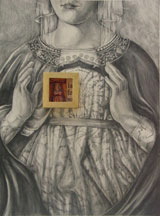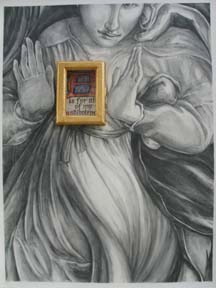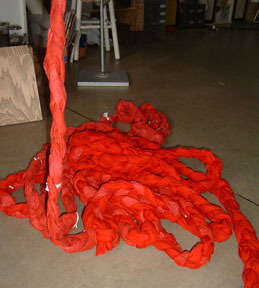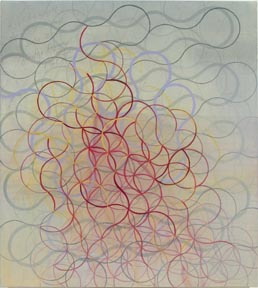Serendip is an independent site partnering with faculty at multiple colleges and universities around the world. Happy exploring!
Snarkiness, or "A Dark Necessity"? The Scarlet Letter, Finale

The site’s satire does not hit the scathing heights of irony, but wallows in the simple scorched-earth attack of snarkiness, said Jon Winokur, the author of “The Big Book of Irony.” “Snarkiness is contempt before investigation,” he said. “It’s just a pose that rejects everything in its path, and that’s what I take this to be.”
On-Line Reading for Tuesday, 4/8:
Laurie McNeill, "Teaching an Old Genre New Tricks: The Diary on the Internet."
Biography 26, 1 (2003): 24-47.
Think SPECIFICIALLY about "Stuff White People Like," and bring in/
blog, diary, autobiography, romance, novel...
begin thinking about your next paper, on the emergence of diary--> autobiography-->blogs
(when to make this due??)
what are the areas of overlap/what distinguishes these genres/why should we care?
One of my basic, but as yet unexplored and unsupported, assumptions...is that ‘genre’ refers to structure, and that ‘genre’ does not give a very reliable indication of content or of function....
I have been insisting on The Scarlet Letter as a novel, not an autobiography....Hawthorne does intend to display himself to the reader behind...the veil of fiction...But does that make it...an (emotional rather than historical) autobiography in the form of a novel? It has none of the structures of an autobiography, and plenty of novelistic structures....
I am still saying ‘autobiographical’,
rather than ‘autobiography’. Adjective or noun. The thing itself, or like to
the thing itself....There is the general structure of a piece, and then
there are its communicative tactics. The latter are adjectival to the former’s
nominalism.
....there is a desire to
make generic categories neat, to make rules for each genre...those
rules only work all the time if you squint until your eyes are shut, or if you
make everything an exception to the
rule.
...the same structure...can have very different effects. What is the use of the...genres
as they are established, then? What do they tell us?....recognizing the structure informs the audience/reader what they are supposed to look for....The structure of a piece
tells the reader how to view the particular
mobilizations of whatever tactics are used, be they sentimental or humorous
or whatnot.
Let's take this "whatnot" back to (the structure--> tactics used in) The Scarlet Letter....
 "Red Letter Day, No. 1" |
 |
Let's think about it as playing with (and finally refusing the terms of?)
the genre of a mystery novel.
In the finale,
"It was revealed! But it were irreverent to describe that revelation" (180).
"Thre was more than one account of what had been wittnessed on the scaffold....
The reader may choose among these theories" (182).
What do you think happened? What did YOU witness?
akeefe, Take it Off! "Masks reveal more than they conceal."
Christina, On the Rights of the Writer and the Reader: Yet, reading is a brave act that
cannot be reversed; one cannot “un-read” something....something read may not be desirable …
Part of the undefined contract
between a reader and a writer is that the writer has the freedom of speech and
the reader has the freedom of interpretation....Words, however, are
ambiguous representations of thoughts.
Hawthorne: "It is singular..how long a time often passes before words embody things" (159).
"The reader may choose among these theories....we have thrown all the
light we could acquire upon the portent, and would gladly...erase its
deep print out of our own brain" (182).
What light has been thrown upon the portent?
What IS "the scarlet letter"?
What does the "A" stand for?
What is revealed when "all is revealed"?
(Back to Jessy's rubrics:)
what is the structure of the book?
What are its tactics?
What instructions does
Hawthorne's "device of multiple choice" give us
what?
 "Untitled" |
 "Untitled" |
"What we did had a consecration of its own" (140) with
"when we violated our reverence each for the other's soul" (181)?
Can we achieve some sort of "alchemy" between the two positions?
"So Pearl--the elf-child,--the demon offspring...
became the richest heiress of her day" (184).
???!!!
What do you make of Hester's return?
"There was a more real life for Hester Prynne, here in, in New England, than in that unknown region where Pearl ahd found a home....She had returned, therefore, and resumed,--of her own free will...the symbol of which we have related so dark a tale" (185).
What do you make of the final gesture
toward "the coming revelation"??
"She assured them that...when the world should have grown ripe for it, in heaven's own time, a new truth would be revealed, in order to establish the whole relation between man and woman on a surer ground of mutual happiness....The angel and apostle of the coming revelation must be a woman...
a topic inspired by Michael Tratner, "Working the Crowd: Movies and Mass Politics"
(Criticism 45, 1, Winter 2003: 53-73):
- the dominant theory of crowd psychology--Freud's--treats members of a crowd as individuals....in a mass, each person is lost in a private unconscious dream of loving the leader....psychoanalysis converts the crowd back into a collection of spectators....This makes movie watching rather like dreaming in bed in the dark.
- Cf. the Motion Picture Production Code of 1930 ("the Hayes Code"): "The grandeur of mass meetings, large action, spectacular features, etc. affects and arouses more intensely the emotional side of the audience"....the Hayes Code uses the power of social influence to provide a common morality for everyone....Private life is...constructed by public life.
- cf. John Stuart Mill, "On Liberty" (1859): written to counter a "social tyranny...of prevailing opinion and feeling...he fears the destruction of individuality (i.e. long before movies, people worried about ideological effects!)
...the Old World, with its crowds and cities, offered them a more eligible shelter and concealment than the wilds of New England, or all America, with its...few settlements (153)
...the crowd was in a tumult. The men of rank and dignity...were so taken by surprise, and so perplexed as to the purport of what they saw...that they remained silent and inactive spectators....they beheld the minister...approach the scaffold, and ascend its steps...Old Roger Chillingworth followed..."there was no one place so secret...where thou couldst have escaped me, --save on this very scaffold" (179).
(your feelings, your thoughts?)
What have you understood?
So: what WAS this all about???
Of what is "the scarlet letter" a symbol? A type?







